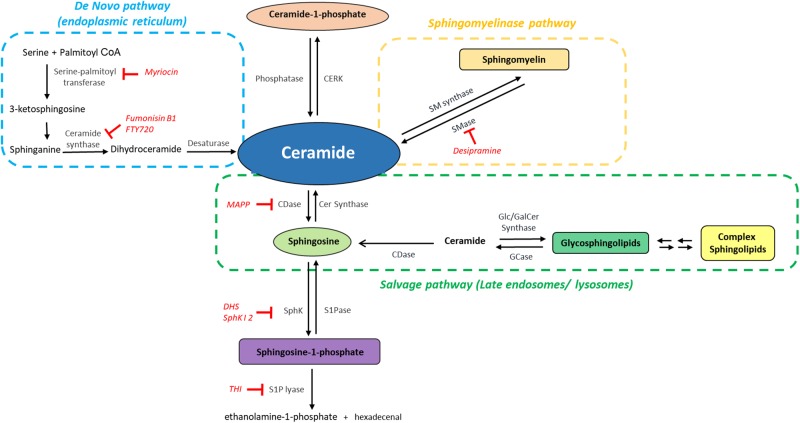FIGURE 2.
The sphingolipid network: metabolic interconnection between bioactive sphingolipids. Ceramide, the central hub of sphingolipid metabolism, is synthesized by the de novo pathway (light blue), from serine and palmitoyl CoA, by the sphingomyelinase pathway, i.e., through hydrolysis of sphingomyelin mediated by sphingomyelinases (SMase) (orange) or by the salvage pathway (green). Ceramide can then be phosphorylated to generate Ceramide-1-phosphate and/or deacylated to form sphingosine, which is then phosphorylated to generate sphingosine-1-phosphate (S1P). The catabolism of S1P mediated by S1P lyase provides the only exit route from the sphingolipid network. CDase, ceramidase; CERK, ceramide kinase; GCase, glucosylceramidase; SMase, sphingomyelinase; SM synthase, sphingomyelin synthase; SphK, sphingosine kinase; SPPase, sphingosine phosphate phosphatase. The inhibitors mentioned in this Review are indicated in red.

